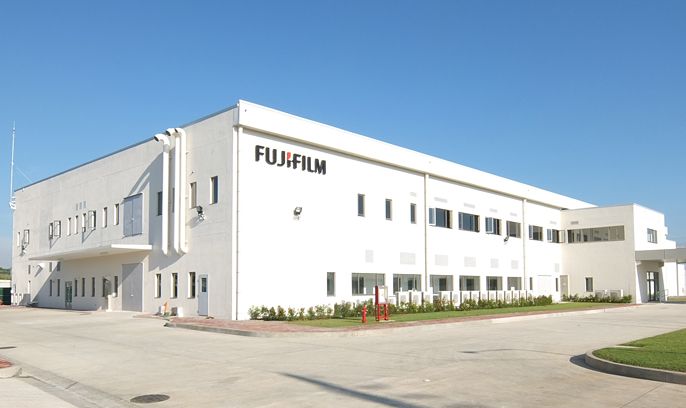Fujifilm Expands Philippine Optics Facility with New Circular Manufacturing Center to Boost Sustainability
Back in 2013, Fujifilm opened its first lens manufacturing facility in the Philippines. It originally had the goal to produce 18 million lenses a year by FY2015.
Now Fujifilm Business Innovation is expanding its existing facility in Laguna, Philippines, by adding a new Circular Manufacturing Center. This dedicated section will focus on remanufacturing used multifunction devices, aiming for up to 84% parts reuse. Scheduled to begin operations in August 2026, the project strengthens Fujifilm’s commitment to sustainability and the circular economy in the Asia-Pacific region. Full press release below.
Press Release
FUJIFILM Business Innovation Establishes the Production site of the Remanufactured Machines in the Philippines
Strengthening resource circulation in the Asia-Pacific region and accelerating the realization of a circular economy
July 8, 2025
Tokyo, July 8, 2025 – FUJIFILM Business Innovation announces the establishment of the Circular Manufacturing Center (hereinafter: CMC) at FUJIFILM Optics Philippines Inc. (hereinafter: FOPH), in Laguna, Philippines, to promote the resource circulation in the Asia Pacific by the remanufactured machines’ production. The commencement of operation is planned for August 2026.
The CMC will be established on the premises of FOPH, a manufacturing site for imaging equipment within the Fujifilm Group. In the CMC, the remanufactured machines*1 are manufactured from collected machines in the Asia-Pacific region, and these will be disassembled to a component level and cleaned. Careful inspection and diagnosis are conducted to identify the parts that are suitable for reuse. The reusable parts will be cleaned and repaired before being sent to reassembly. Each remanufactured machine undergoes the same rigorous inspection process as newly built machines, to ensure they meet the same quality and reliability standards. These remanufactured machines achieve a maximum parts reuse rate of 84%*2 (by weight) and are provided as new products with their usage history, such as the number of prints, reset and new manufacturing date, product name, product code, and serial number assigned.
FOPH has advanced manufacturing technology developed through the assembly of precision equipments such as interchangeable lenses for digital cameras. For this reason, FOPH is suitable for building production line of the remanufactured machines that needs the high-precision manufacturing technology. In addition, FOPH has skilled personnel with extensive experience in precision equipment manufacturing, enabling them to apply their accumulated expertise in assembly techniques and quality control. FUJIFILM Business Innovation trains the skilled personnel from FUJIFILM Optics Philippines Inc. to serve as core members of remanufacturing. Building on thisfoundation, FUJIFILM Business Innovation aims to introduce the manufacturing processes established at the remanufacturing site in Japan to the CMC in the Philippines, with the goal of ensuring stable quality and establishing a production system from the initial launch phase. These efforts will contribute to the development of local human resources to promote resource circulation across the Asia-Pacific region.
Additionally, the Philippines, where FOPH is located, is positioned in the center of Asia-Pacific region, therefore possesses geographical advantages in terms of logistics and supply chains, which were key factors in deciding to establish the CMC. To make maximal use of these conditions, FUJIFILM Business Innovation will strive to achieve the production efficiency as soon as possible and accelerate efforts toward the realization of a circular economy.
Since 1995, FUJIFILM Business Innovation has been implementing a recycling policy “Promoting Resource Circulation Toward Zero Waste”, and established a resource circulation system, which examines the entire product lifecycle from product planning, development, and manufacturing stages through to disposal. Since then, the company have recognized the importance of environmental conservation and have been continuously working to reduce the environmental impact through the business activities. Furthermore, based on the recycling technologies and resource circulation expertise cultivated in Japan, the company is strengthening regional collection, recycling, and supply cycles and expanding global resource circulation system. In fact, the company established FUJIFILM Eco-Manufacturing (Suzhou) Corp., in China in 2008 and CMC in the Netherlands in 2024 as a production site to promote resource circulation in Europe. With the establishment of CMC in the Philippines as a new production facility to promote resource circulation in the Asia-Pacific region, FUJIFILM Business Innovation accelerates the strengthening of the global production system, the promotion of resource circulation, and the reduction of natural resource input and CO2 emissions.
FUJIFILM Business Innovation will continue to strive to be a company that contributes to the realization of a more sustainable society, and will actively expand efforts to reduce environmental impact by coordinating initiatives in each region.
Outline of the Circular Manufacturing Center in the Philippines
| Business | Production of remanufactured machines that have been disassembled, cleaned, and had necessary parts replaced, with the same quality assurance as new machines, from used multifunction devices collected in the Asia-Pacific region. |
|---|---|
| Location | 107 Prosperity Ave. Carmelray International Business Park-SEZ, Canlubang, Calamba City 4028 Laguna |
| Exclusive area | Approximately 500m2 |
| Employees | Approximately 50 employees |
| Construction Commencement | July 2025 |
| Operation Commencement | Planned for August 2026 |
- *1 A machine whose components have been disassembled, cleaned, repaired, or replaced with components from a used product, or that has been assembled from parts of used products that have been remanufactured as needed, and whose quality is guaranteed as a new product.
- *2 The maximum value of design.


